9 Days 8 Nights
Daily Tour
50 people
___
| Semi Deluxe | ||
|---|---|---|
| ADULT | CHILD | INFANT |
| ₹47,999.00 | ₹0.00 | ₹0.00 |
| Deluxe | ||
| ADULT | CHILD | INFANT |
| ₹48,999.00 | ₹0.00 | ₹0.00 |
| Super Deluxe | ||
| ADULT | CHILD | INFANT |
| ₹54,999.00 | ₹0.00 | ₹0.00 |
| Luxury | ||
| ADULT | CHILD | INFANT |
| ₹108,999.00 | ₹0.00 | ₹0.00 |
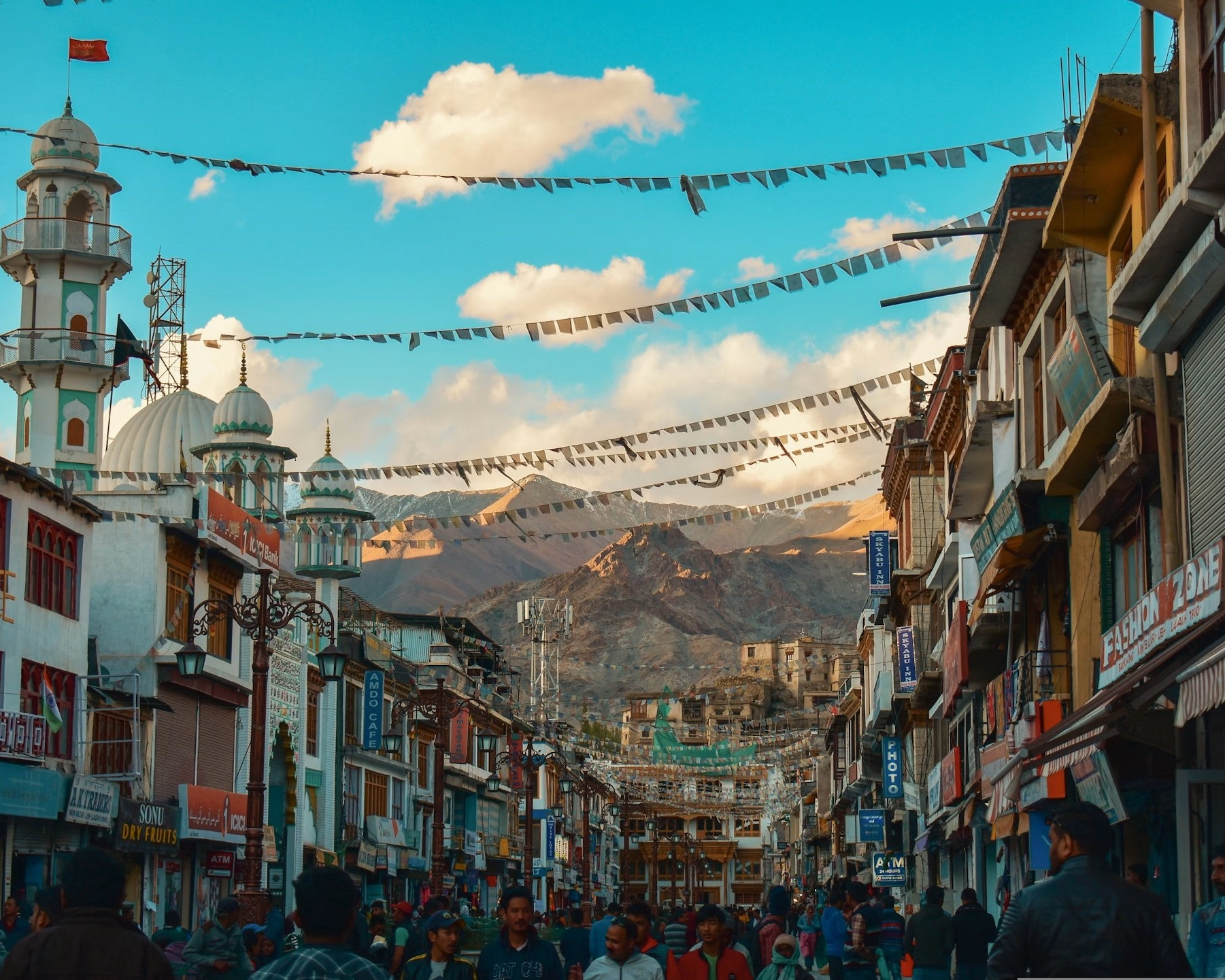
Altitude: 3500 m
We will pick you up from Leh airport and drop you at the hotel. After checking in and freshening up. If possible, you will visit Leh Palace, Shanti Stupa, and Leh Market. In the evening, you will be dropped back at the hotel.
Meals: Dinner
Night: Stay at the hotel in Leh
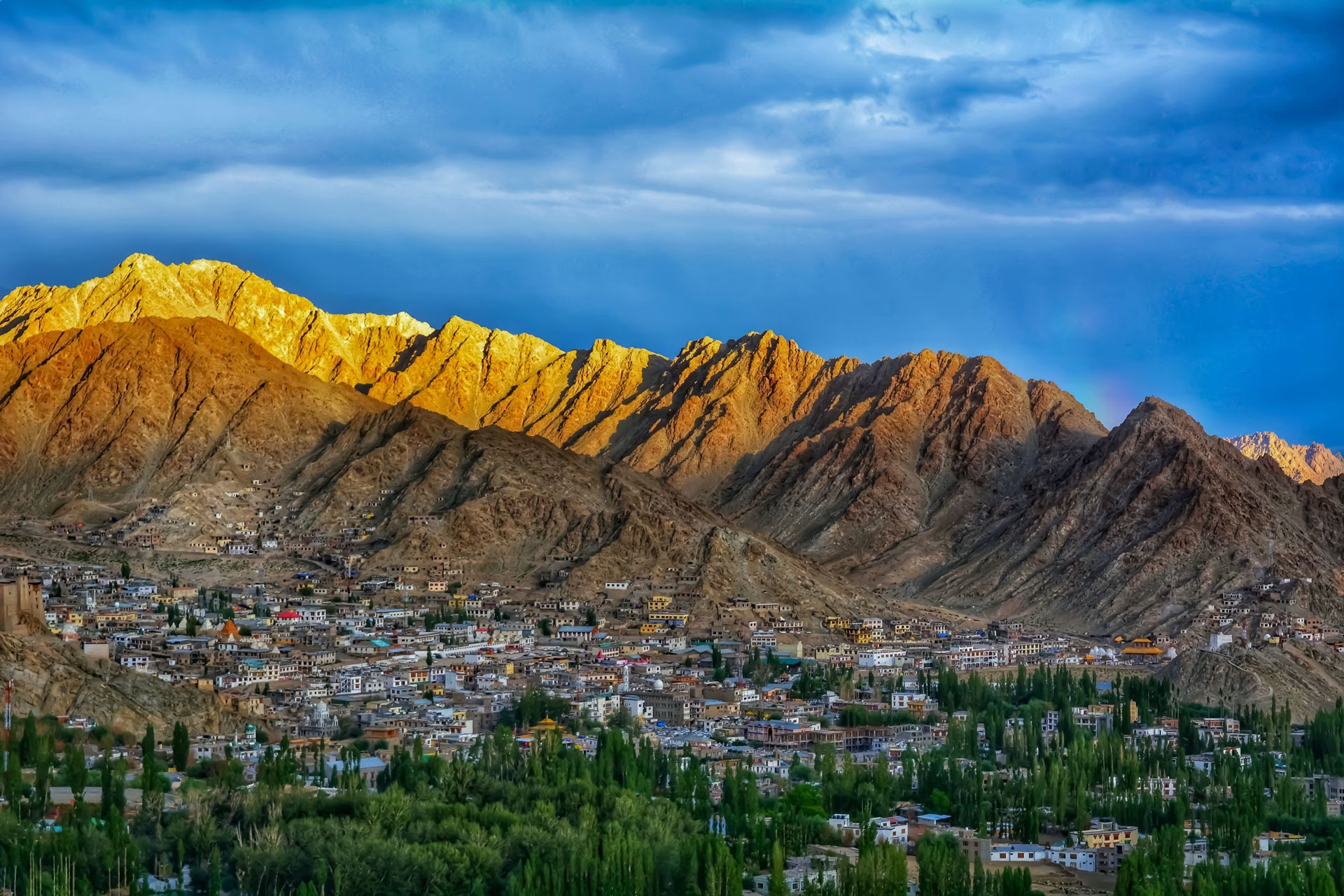
Dist: 210 km | Altitude: 4088 m to 2757 m
Today, you will travel to the beautiful land of Agas, Kargil. On the way, you will explore the famous Hall of Fame, visit the serene Spituk Monastery and Gurudwara, experience the wonder of Magnetic Hill, and stop at the Sangam rafting point to enjoy the stunning views of the river.
Meals: Breakfast, Dinner
Night: Stay at the hotel in Kargil
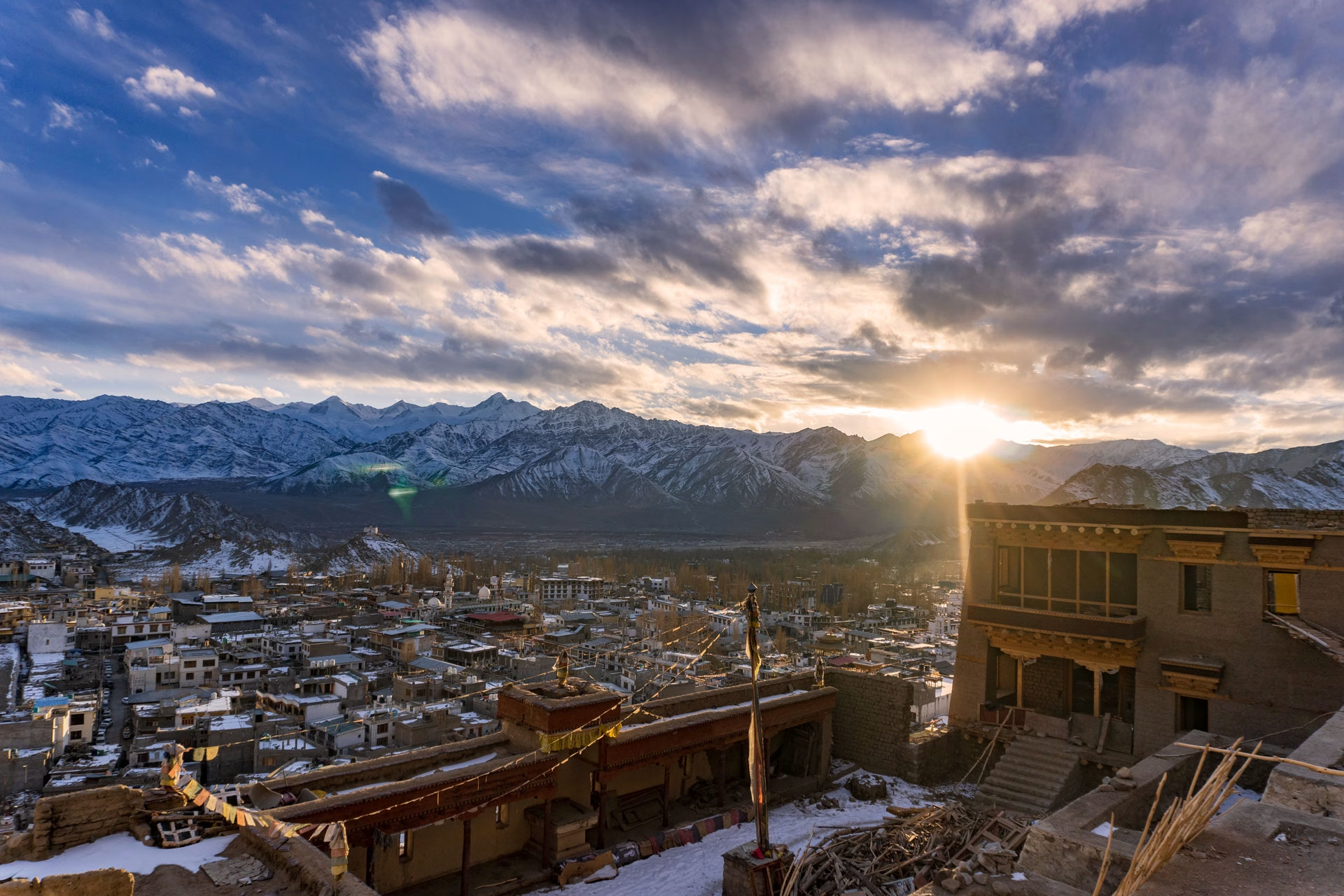
Dist: 210 km | Altitude: 2757 m to 4088 m
After breakfast today, you will drive back to Leh via Mulbekh, Fotu La, Lamayuru, Khaltse, and Nimmoo, enjoying the breathtaking landscapes and stopping for photos along the way. In the evening, you will arrive at the hotel in Leh.
Meals: Breakfast, Dinner
Night: Stay at the hotel in Leh
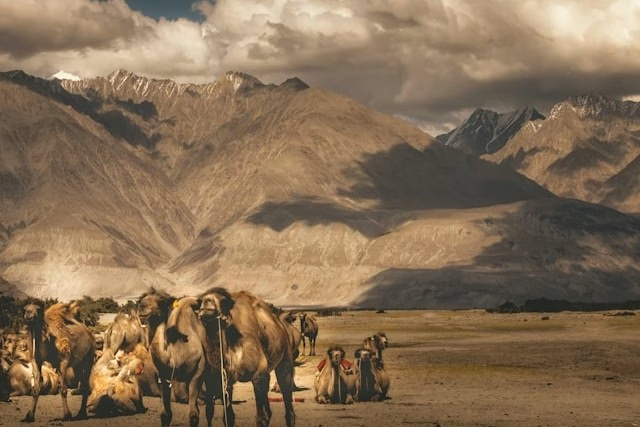
Dist: 160 km | Altitude: 3500 m to 5354 m to 3048 m
Today, you will head towards Nubra Valley via the Highest Motorable Pass, Khardung La. You will visit Diskit Monastery, Hunder Village, Sandunes, and Camel Ride Point. Later, you will check into your stay at Nubra Valley.
Meals: Breakfast, Dinner
Night: Stay at a hotel/homestay in Nubra Valley
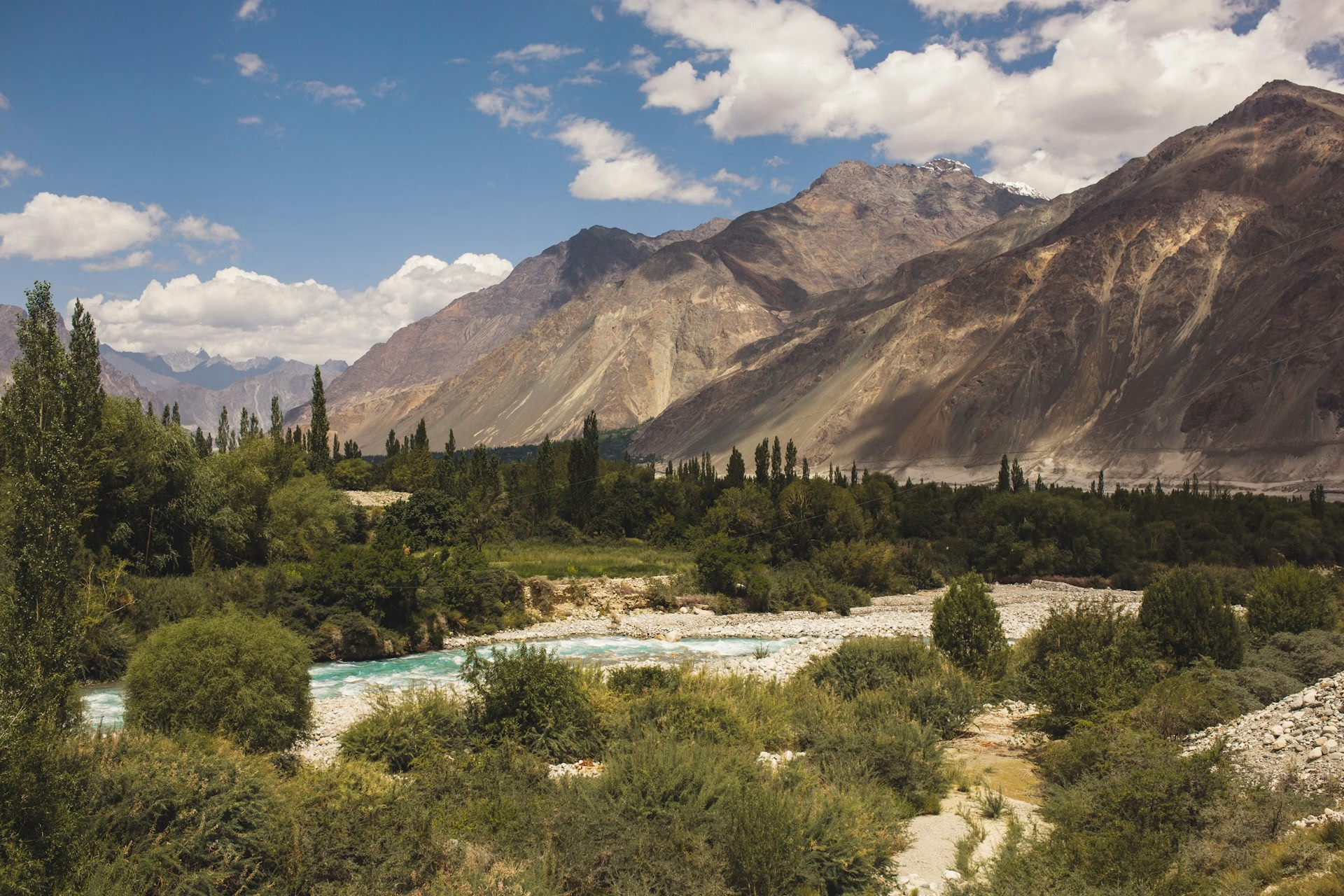
Dist: 160 km (to and fro) | Altitude: 3048 m to 3001 m
Today, you will visit the last northmost village in India, where you can enjoy the beautiful place surrounded by apricot orchards. You also have a chance to get the blessing of the almighty at Turtuk Gompa. In the evening, you will return to Nubra for your Stay.
Meals: Breakfast, Dinner
Night: Stay at a hotel/homestay in Nubra Valley
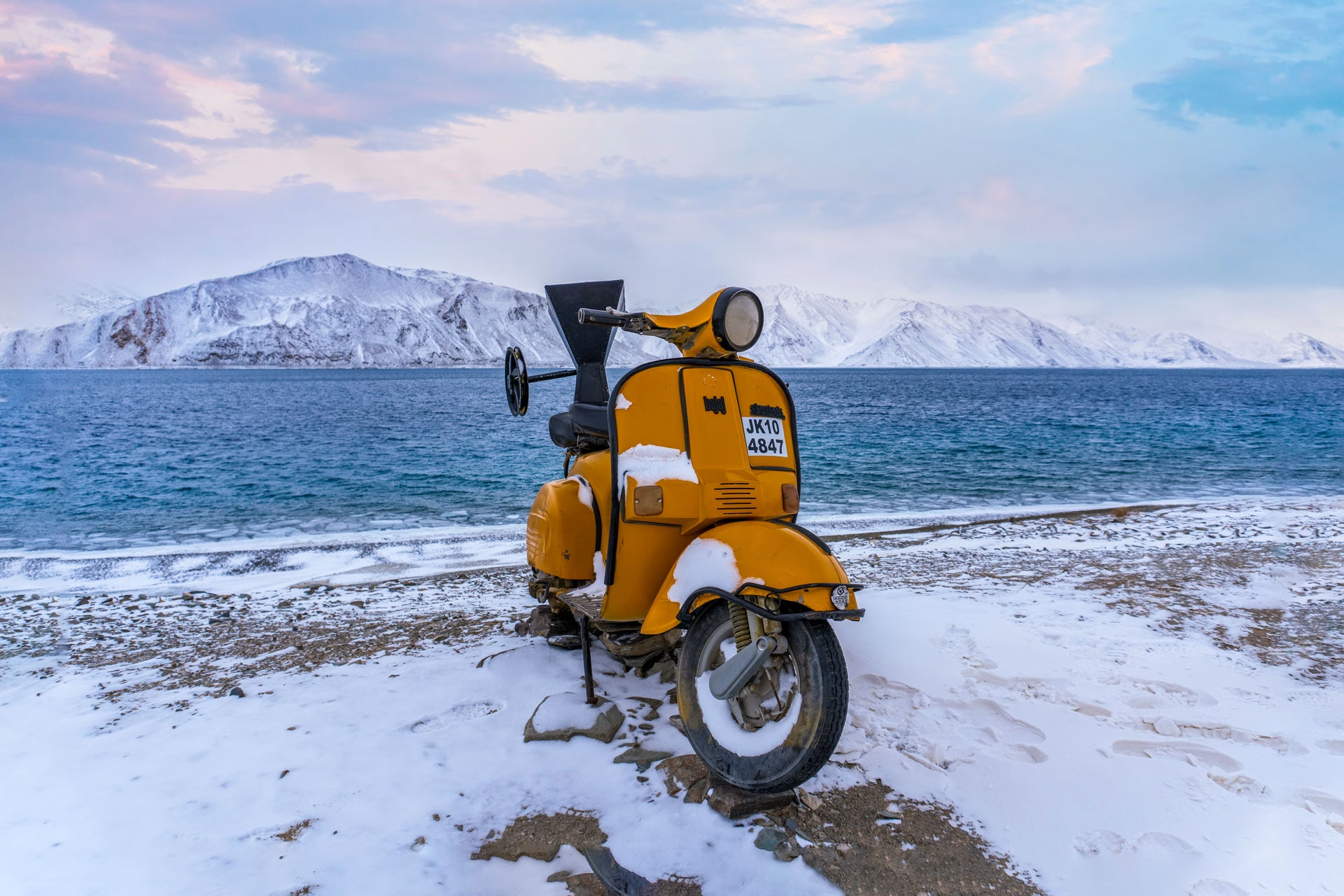
Dist: 200 km | Altitude: 3001 m to 4814 m
Today, after waking up to the view of the Karakoram ranges in Nubra Valley, you will head towards the world’s highest saltwater lake, Pangong Tso, via Shayok and Durbuk. At night, you will stay near Pangong Lake.
Meals: Breakfast, Dinner
Night: Stay at campsite/stay near Pangong Lake
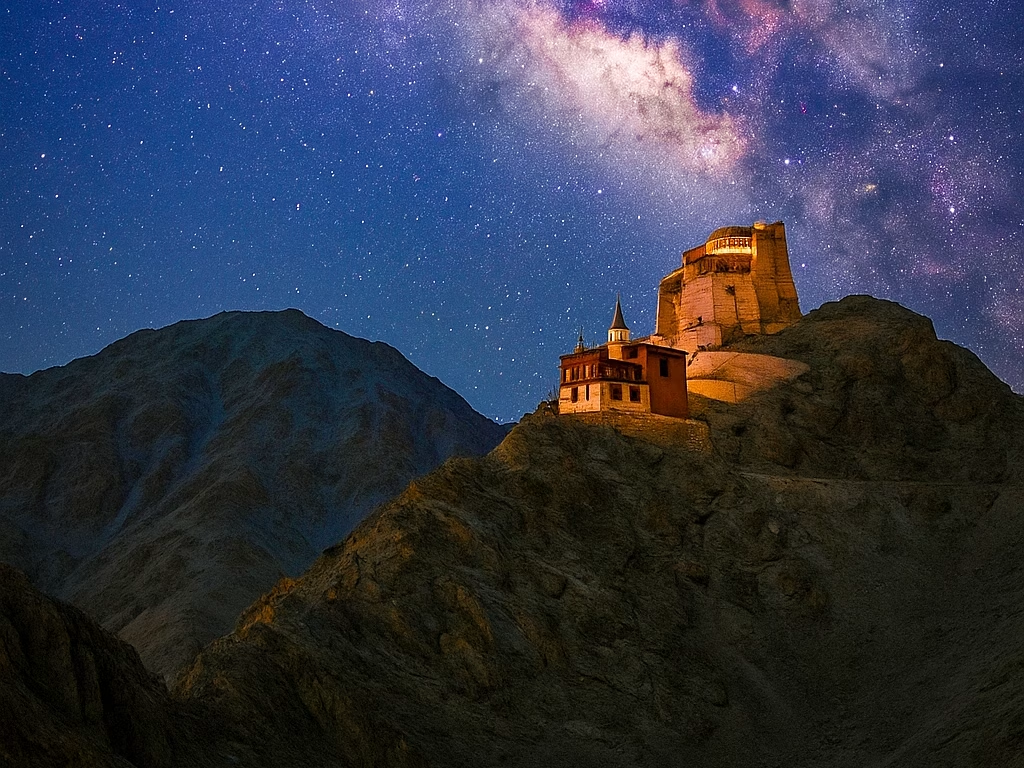
Dist: 309 km | Altitude: 4814 m to 5798 m
After breakfast, you will drive to Hanle through the Tsaka La Pass. Later that evening, you will check into your accommodation in Hanley. Enjoy a peaceful evening under the clear night sky filled with countless stars.
Meals: Breakfast, Dinner
Night: Stay at the homestay/Hotel in Hanle
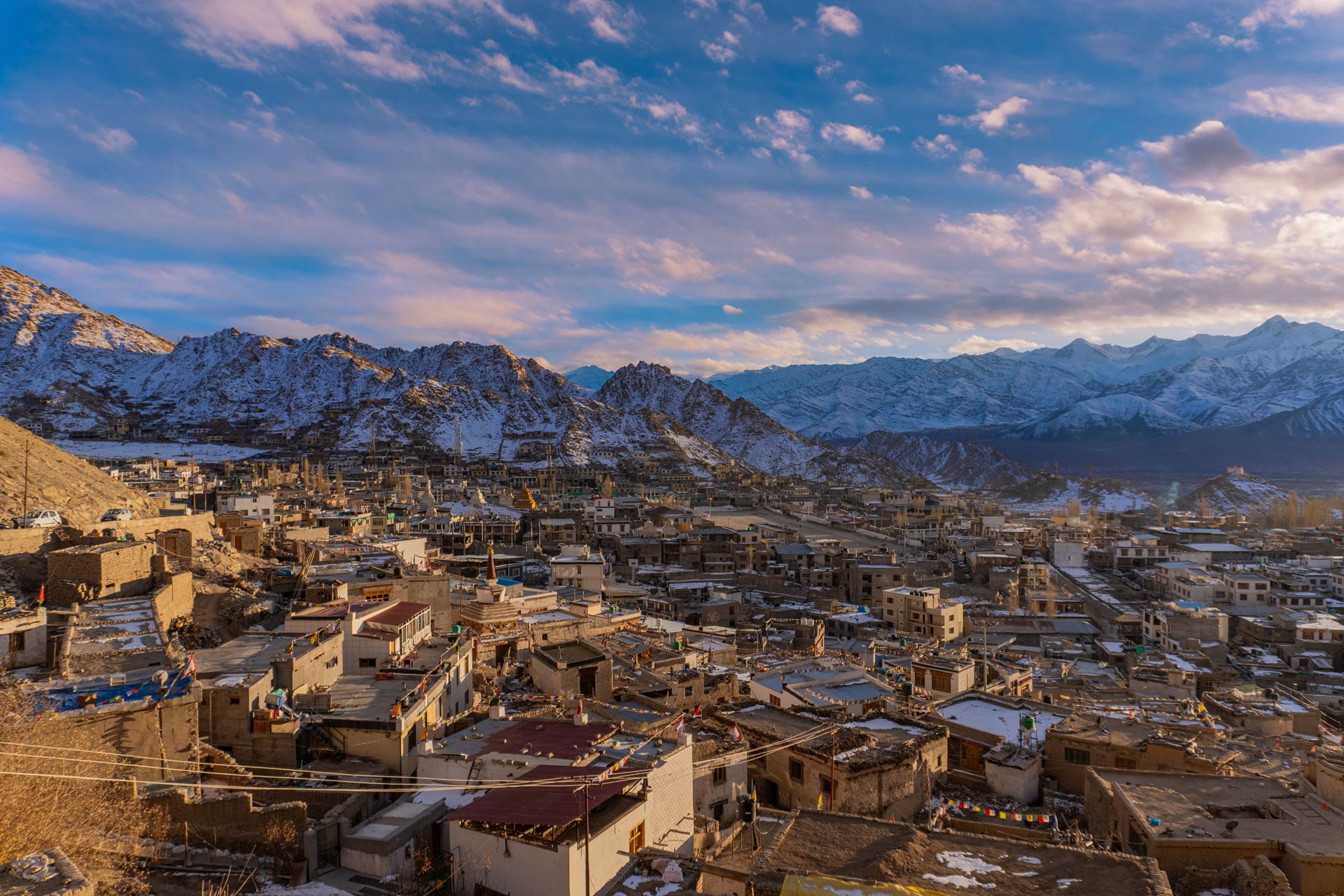
Dist: 313 km | Altitude: 5798 m to 3500 m
Today, you will travel to Leh, stopping at Thiksey Monastery, Rancho School, and Shey Palace. Then, you will check into your Leh hotel. In the evening, you can relax and explore the nearby market at your own pace.
Meals: Breakfast, Dinner
Night: Stay at the Hotel in Leh
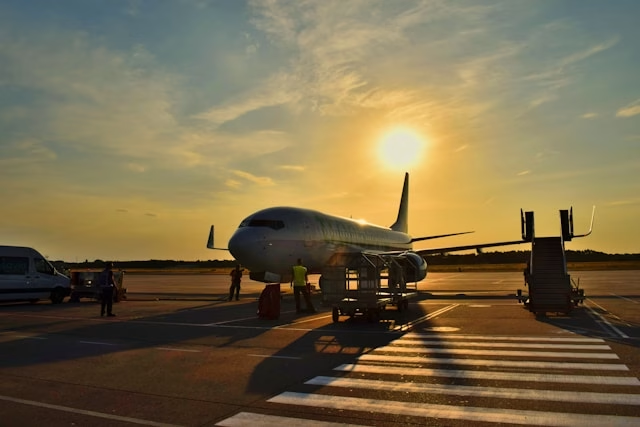
Checkout: 10:00 am
It's time to say goodbye to this fantastic tour amidst the Karakoram range. You will head towards Leh airport with lots of memories to cherish forever. We hope this journey leaves you with unforgettable moments and a desire to return.
Meals: Breakfast
Night: Nil
Location | Places to visit | Activities |
Leh | Hall of the fame War memorial, Shey Monastery, Thiksey Monastery, Shanti Stupa, Leh Palace, Leh Market, Gurudwara Patthar Sahib, Magnetic Hill, Rafting Point. | River Rafting |
Nubra | Khardung La, Diskit Village, Diskit Monastery, Sand Dunes, Camel Ride Point, Hunder, Shyok River. | Camel Riding |
Pangong Tso | Shayok, Durbuk, Tangsay Village, Pangong Lake, Chang la Pass. | |
Hanle | Tsaka LA, Hanle Monastery, Hanle Observatory, Hanle Valley, Hanle Lake | Orbitory Star Gazing |
Turtuk | Turtuk Waterfall, Apricots Orchards, Thang, Yul mosque, Balti Heritage House, and Museum. | |
Kargil | Kargil City Viewpoint, Mulbkesh Monastery, Munshi Aziz Bhat Museum, Rangdum Gompa, and Kargil War Memorial. |
Note:
Leh
Semi Deluxe | Borgo Villa, Jeevanam Villa |
Deluxe | Nature’s Land, Hotel Lalingkha, Hotel Bluestone, Mahey Retreat, Maple Ladakh |
Super Deluxe | Himalayan Retreat Karzoo, Hotel Spa, Charu Palace, The Kaal |
Nubra
Semi Deluxe | Nubra Boutique Camp, Royal Mount, Pika Camp, Weeping Willow Camp |
Deluxe | Paramount Camp, Ladakh Elysium Camp, Urth Home Boutique |
Super Deluxe | Paramount Super Deluxe, Urth Home Boutique |
Pangong
Semi Deluxe | White Heaven Cottage, Mystic Mountain Cottage, Native Retreat Cottage |
Deluxe | Zamta View Point, Native Retreat Cottage, Star Sherathon Cottage |
Super Deluxe | Snowpine Wooden Cottage, Gongma Residency, Polarise Cottage |
Hanle
Semi Deluxe | Padma Homestay, Ama Cottage |
Deluxe | Padma Homestay, Umlingla Residency |
Super Deluxe | Umlingla Residency, Royal Rebo |
Kargil
Semi Deluxe | Jan Palace, Hotel Jazeera Hangout, Hotel Greenland |
Deluxe | Hotel Rangyul, Hotel Siachen |
Super Deluxe | Royal Gasho, Zojila Residency |
Places to visit during the Leh Nubra Turtuk Pangong Hanley Kargil Tour
LEH
Leh, located in Ladakh, Jammu and Kashmir, is known for its breathtaking landscapes, Buddhist monasteries, and Tibetan influence, earning it the nickname “Little Tibet.” Key attractions include the Leh Palace, reminiscent of the Potala Palace, and Buddhist sites like Shanti Stupa and Sankar Gompa. The region is famous for adventure activities such as high-altitude treks and river rafting in the Indus and Zanskar Rivers. Leh offers a range of accommodation options, including guesthouses, tourist complexes, and government-run bungalows, which are particularly busy from July to September. Dining options feature Tibetan and Kashmiri cuisines, with local favourites like momos and thukpa and bakeries serving fresh-baked goods.
NUBRA
Nubra Valley, located between the Karakoram and Ladakh ranges in northern Ladakh, is renowned for its stunning landscapes and high-altitude attractions. Key highlights include the Khardung La Pass, the highest motorable road at 18,380 feet, and its majestic peaks, glaciers, and enchanting valleys. Notable sites include Diskit and Samstanling Gompas, the Panamik hot springs, and opportunities for double-humped camel safaris, river rafting, trekking, and sunbathing on the dunes at Hunder. The valley, also known as Ldumra or the “Valley of Orchards/Flowers,” features fertile soil, abundant vegetation, and the confluence of the Shayok and Siachen rivers. Diskit serves as the administrative headquarters, with Diskit Gompa offering panoramic views, while Samstanling Gompa provides a scenic vantage point. Historically part of the Silk Route, Nubra’s major villages include Kardong, Khalsar, Tirit, Sumoor, Tegar, Pinchemik, Tirisha, and Panamik, with Panamik being a significant stop for caravans and famous for its hot springs.
TURTUK
Turtuk is a remote village in the Leh district of Ladakh, located in the Karakoram ranges near the Line of Control with Pakistan. About 205 km from Leh, it is the last Indian outpost before Pakistan-administered Gilgit-Baltistan. Formerly part of Pakistan’s Baltistan region until the 1971 war, Turtuk is known for its scenic beauty, hospitable locals, and strategic importance as a gateway to the Siachen Glacier. The village opened to tourism in 2010, is divided by the Shyok River and features lush paddy fields, a canal system, and picturesque landscapes.
PANGONG TSO / PANGONG LAKE
Pangong Tso, or Pangong Lake, is a high-altitude, endorheic lake in the Himalayas at about 4,350 meters (14,270 feet). Stretching 134 km (83 mi) long, with approximately 60% in China and 5 km (3.1 mi) wide at its broadest point, it covers 604 km². Despite its saline water, the lake freezes in winter. Pangong Tso is not part of the Indus River basin and is being considered for Ramsar Convention recognition as a transboundary wetland of international importance.
The lake lies in disputed territory, with the Line of Actual Control passing through it. A section 20 km east of the Line is controlled by China but claimed by India. The northern bank features the Khurnak Fort, which China has controlled since 1952. Pangong Tso was the site of military action during the Sino-Indian War of 1962.
The lake’s salty water supports minimal aquatic life, with no fish but some crustaceans. It is a breeding ground for birds like the Bar-headed goose and Brahmini ducks and supports wildlife such as kiang and marmots. Formerly connected to the Shyok River, the lake has shrunk recently and has marshes and wetlands at its edges. The high salinity and harsh conditions contribute to its low biodiversity.
HANLEY
Hanle, about 255 km from Leh in the Changthang Valley, is a remote and scenic village with around 300 residents. It requires an inner line permit for Indian visitors due to its proximity to the Indo-Tibetan border. While Hanle was previously off-limits to tourists, it is now accessible to Indian travellers but remains restricted for foreign visitors.
On November 5, the Indian Astronomical Observatory (IAO) in Hanle and Merak, Ladakh, captured images of a rare red aurora attributed to a Stable Auroral Arc (SAR) event. The IAO, run by the Indian Institute of Astrophysics, uses an All-sky Camera that records this phenomenon, visible from 10 PM to midnight, peaking at 10:40 PM. The Hanle observatory in the Hanle Dark Sky Reserve is known for its pristine dark skies, which are ideal for astronomical observations.
KARGIL
Kargil, formerly known as Purig, is a district in Ladakh, situated about 205 km from Srinagar. The region has a diverse history, with Purig encompassing areas like Kargil town, Suru Valley, and Shaghkar Chiktan. The name “Purig” may derive from Tibetan for “of Tibetan origin” or “the brave race”, referring to the Dards. Kargil’s name is believed to mean “place between castles” or “central place” from local language terms.
Historically, Kargil was part of the region ruled by Gasho Tha Tha Khan in the 8th century, who established a dynasty there. Various rulers influenced Kargil, and later, it merged with Jammu and Kashmir. With Ladakh becoming a Union Territory on October 31, 2019, Kargil is now part of this administrative region. The district is known for its multi-ethnic population, including Brogpas, Baltis, Purik, Shinas, and Ladakhis, and speaks languages like Shina, Balti, and Purig. Islam was introduced in the 15th century by Mir Shams-ud-Din Iraqi, though Buddhism persists in certain areas. Kargil became a separate district in 1979, and the Ladakh Autonomous Hill Development Council Kargil was established in 2003, consisting of nine administrative blocks and 30 councillors.
Major Attractions of Leh Ladakh
Alchi Monastery: The Alchi Monastery, located in Alchi Village in Leh District, Ladakh, is one of the oldest Buddhist monasteries in the region. Established between 958 and 1055 AD, it is renowned for its unique Kashmiri-style architecture and ancient wall paintings. Though traditionally attributed to the famous scholar-translator Rinchen Zangpo in the 10th century, inscriptions suggest the Tibetan noble Kal-dan Shes-rab founded it in the 11th century.
The monastery is on the Indus River’s banks, about 66 km from Leh. Unlike other Ladakhi monasteries often perched on hilltops, Alchi Monastery is on the plains. It comprises three main structures: Dukhang (assembly hall), Sum Tsek (a three-story temple with significant statues), and the Manjushri Temple. The monastery features exquisite murals, wood carvings, and notable statues such as the Bodhisattva and Maitreya Buddha. Alchi is part of the ‘Alchi group of monuments,’ which includes the villages of Mangyu and Sumda Chun, all known for their distinctive craftsmanship and historical significance.
Gurudwara Pathar Sahib: Located 25 miles from Leh on the Leh-Kargil road, Gurdwara Pathar Sahib is a revered Sikh shrine built in 1517 to commemorate Guru Nanak Dev’s visit to Ladakh. The Gurdwara is 12,000 feet above sea level and is notable for its association with a miraculous event involving a large boulder.
According to legend, during the construction of the Leh-Nimu road in the late 1970s, a large boulder obstructed the path and could not be moved despite attempts to dynamite it. The bulldozer driver and an army officer had dreams advising against moving the stone. Local Lamas then revealed that the boulder had an impression of Guru Nanak’s body, who had visited the area in the 16th century. The legend states that a demon, enraged by Guru Nanak’s presence, attempted to crush him with a boulder. However, the boulder softened upon contact with the Guru, and the demon’s foot became embedded in it when he tried to push it. This event led the demon to repent and change his ways. The Gurdwara, now maintained by the Indian Army, is considered sacred by Sikhs and local Buddhists. The boulder with Guru Nanak’s imprint and the demon’s footprint remains a central feature of the shrine.
Hemis Monastery: Hemis Monastery, located in Ladakh’s Hemis Valley, is a significant Buddhist site founded in the 11th century by renowned monk Naropa. It is noted for being the wealthiest monastery in Ladakh and the only one to have escaped plunder throughout history, likely due to its hidden location. The monastery gained prominence under Staksang Raspa and King Senge Namgyal in the 1630s. Following the Drukpa style, its architecture resembles Bhutan’s Paro Taktsang Monastery. The road to Hemis is lined with stupas and Mani stones, adding to its serene atmosphere.
Changchub Choling Monastery in Zangla, Ladakh, accessible via a narrow track from Padum, houses 18 nuns and 15 novices. Supported by the Jamyang Foundation since 1989, the monastery features essential facilities like a library, classrooms, and individual rooms. The daily routine includes early prayers, meditation, and Buddhist studies, with additional lessons in English and mathematics when volunteers are available. Despite the harsh environment and limited access to fresh vegetables and healthcare, the nuns, some of whom use traditional remedies for health issues, are actively involved in the community.
Pangong Tso is a high-altitude, endorheic lake in eastern Ladakh, situated at 4,225–4,350 meters above sea level. It stretches 134 kilometres and consists of five sub-lakes. The lake's saline, blue water contrasts with the surrounding arid mountains and freezes entirely in winter. The McMahon Line marks the border in a disputed area between India and China, though China disputes it.
The best time to visit Ladakh is from April to July, during the summer season when temperatures range between 14°C to 32°C. This period offers pleasant weather, while winters are frigid.
Month | Temperature | Season |
April to July | 14° C to 32° C | Summer |
July to Sep | 3° C to 17° C | Monsoon |
Oct to March | 0° C to 15° C | Winter |
Leh experiences snowfall throughout the year, with the most intense snowfall occurring in December and January during winter.
Indian citizens are not required to have a passport to visit Leh or Ladakh but must obtain an Inner Line Permit (ILP) to travel within the region. ILPs can be applied online, at the Deputy Commissioner's Office in Leh, or through a tour operator. Tourists should acclimate for at least 48 hours before travelling to high altitudes. Citizens of Pakistan, Afghanistan, and China need a protected area permit for specific areas. Essential documents include a government-issued ID, passport-sized photos, reservation slips, tickets, and licenses.
Leh, Ladakh's high altitude can lead to altitude sickness (AMS) due to reduced atmospheric pressure, though oxygen levels are not deficient. To prevent AMS, acclimatise by spending a few days in Leh, breathing faster and deeper, and increasing your heart rate. While many visitors do not need an oxygen cylinder, it may be necessary based on individual medical conditions, companions, and travel mode.
A trip to Ladakh can range from Rs. 20,000 to Rs. 50,000 or more, depending on transportation, accommodation, and selected activities.
Private cars are allowed in Leh with certain restrictions:
Vehicle Registration: Only vehicles registered in your or your spouse's or father's names are permitted.
Taxis: Only Leh-registered taxis can be used for sightseeing.
Zanskar: Only registered taxis or motorcycles from Kargil are allowed.
Permits: An Inner Line Permit is required for border areas, and a Rohtang Pass Permit is needed for access via Manali.
Ground Clearance: Vehicles must have a ground clearance of at least 190 mm.
Local Rules: Adhere to rules set by local taxi unions and rental associations.
An Inner Line Permit (ILP) is required to travel in and across Ladakh. Indian citizens need an ILP for most areas, though some exceptions apply, while foreign nationals must obtain an ILP for travel across Ladakh. Key areas such as Nubra Valley, Khardung La, Pangong Tso, and Tso Moriri require an ILP. The ILP is valid for 21 days for Indian citizens and 7 days for foreign nationals.
A 6-day trip to Leh Ladakh can be sufficient for a basic itinerary. This allows you to visit key attractions such as Leh Palace, Shanti Stupa, local monasteries, and nearby areas like Pangong Lake or Nubra Valley; for more details and a tour itinerary, contact Uncia Trails.
Kashmir and Leh Ladakh offer unique attractions, reflecting their distinct landscapes and cultural influences. With its lower altitude, Kashmir is known for its lush, fertile scenery, serene lakes like Dal Lake and Nigeen Lake in Srinagar, and rich, flavorful cuisine. In contrast, Leh Ladakh's elevated terrain features a stark, arid landscape, highlighted by attractions such as Pangong Lake and numerous Tibetan-influenced monasteries like Hemis, Thiksey, and Spituk.
Driving from Manali to Leh in one day is possible, covering the 426 km distance in about 13 to 15 hours. However, due to the rugged, mountainous terrain, it can be exhausting. Many travellers prefer breaking the journey into two days for rest and exploration. Additionally, some drivers may experience low oxygen levels and need oxygen to recover from Acute Mountain Sickness (AMS).
The Kushok Bakula Rimpochee Airport in Leh is the area's sole airport. Several domestic airlines provide regular flights to Leh from major cities such as Jammu, Srinagar, Delhi, Chandigarh, Mumbai, Kolkata, and other urban centres across India.
Yes, Kargil is colder than Leh. According to the MET department, Kargil's minimum temperature can drop to around -20°C, making it the coldest town in Jammu and Kashmir, while Leh's minimum temperature is around -10.9°C.
| # | Discount group | From adult | To adult | Value |
|---|---|---|---|---|
| 1 | Discount (3 to 4 person) | 3 | 4 | 5% |
| 2 | Discount (5 to 6 person) | 5 | 6 | 15% |
| 3 | Discount (7 to 8 person) | 7 | 8 | 20% |
| 4 | Discount (8 to 9 person) | 8 | 9 | 25% |
| 5 | Discount (9 to 10 person) | 9 | 10 | 30% |
| 6 | Discount (more than 10) | 10 | 50 | 35% |
Leave a review